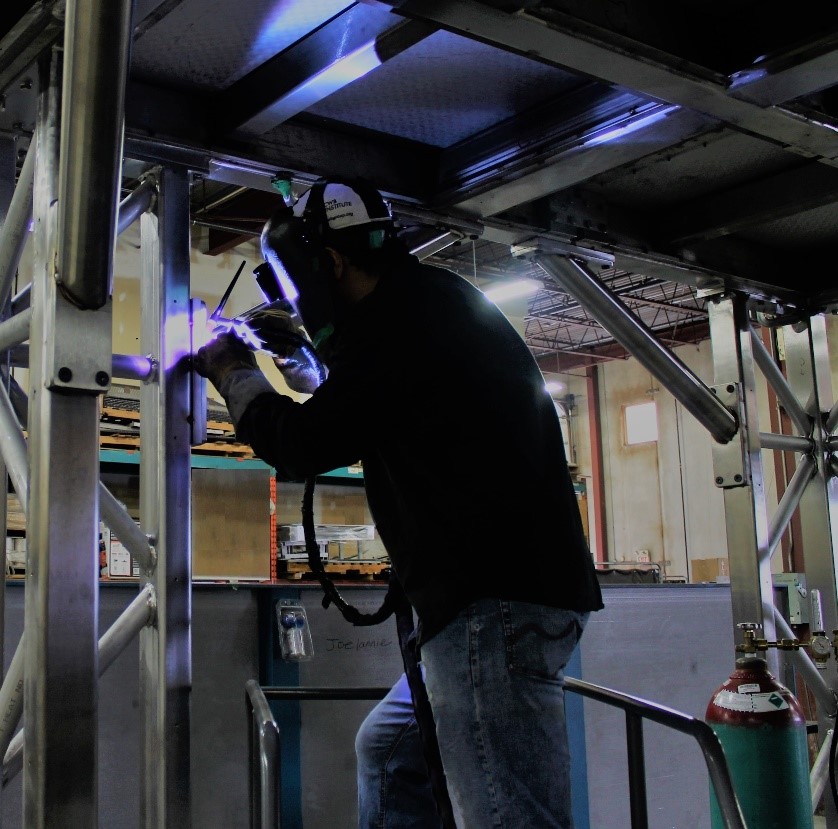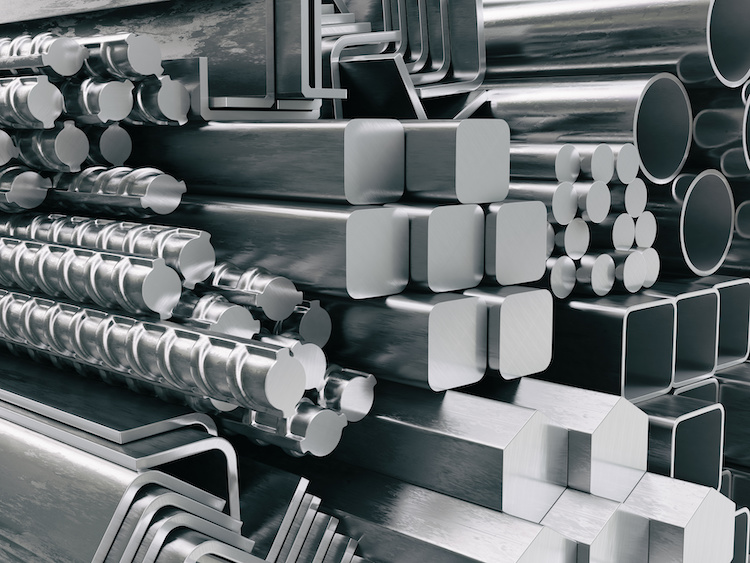Expert Steel Fabricators Melbourne: Top Quality You Can Count On
Expert Steel Fabricators Melbourne: Top Quality You Can Count On
Blog Article
Comprehensive Evaluation of Cutting-Edge Techniques in Steel Manufacture Sector
As the steel construction industry proceeds to advance, the combination of advanced strategies has ended up being vital for remaining affordable and satisfying the needs of modern-day production criteria. From laser reducing improvements to the use of robotics and 3D printing in steel production, the landscape of construction methods is quickly altering. With each innovation bringing its own collection of advantages and difficulties, a thorough evaluation of these techniques is paramount for companies intending to streamline their procedures, improve accuracy, and ultimately, elevate the high quality of their steel fabrication result. In this dynamic sector where technology plays an essential role, understanding the nuances of these sophisticated methods is not just a choice but a need for those aiming to advance in the ever-evolving world of steel fabrication.
Laser Cutting Advancements
In the realm of steel fabrication, laser reducing improvements have actually reinvented the precision and efficiency of metal shaping procedures. By using the power of focused laser beam of lights, producers can now accomplish unequaled degrees of precision when cutting through various types of steels. This technology makes it possible for elaborate designs to be executed with marginal product wastage, making it an affordable solution for markets requiring high accuracy parts.
One of the essential benefits of laser cutting is its capacity to take care of a wide variety of materials, consisting of stainless steel, aluminum, and carbon steel, easily. The process produces clean, burr-free edges, getting rid of the requirement for added completing steps. The non-contact nature of laser reducing decreases the threat of product contamination, resulting in higher high quality end products.
In addition, laser cutting equipments can be set to make swift, accurate cuts, significantly lowering production time contrasted to traditional cutting approaches. This speed and accuracy make laser reducing specifically suitable for mass manufacturing environments where efficiency is extremely important. As innovation proceeds to advancement, laser cutting is positioned to play a progressively vital function in the steel fabrication industry.

CNC Machining Innovations
The development of CNC machining technologies has actually ushered in a new age of accuracy and performance in the steel construction sector. Computer Numerical Control (CNC) makers have transformed steel construction by using unequaled precision and repeatability in the production process. steel fixing. One of the key developments in CNC machining is the combination of sophisticated software application systems that allow real-time surveillance and adjustments, causing boosted productivity and quality assurance
Moreover, the growth of multi-axis CNC makers has actually enabled the fabrication of complex steel parts with detailed layouts that were formerly challenging to create. These machines can perform a wide variety of machining procedures, including milling, drilling, transforming, and grinding, all with high levels of accuracy.
In addition, the consolidation of automation and robotics in CNC machining has streamlined manufacturing processes, reduced lead times, and lessened the margin of error. This combination of innovative technologies not just increases performance yet additionally guarantees constant top quality across all fabricated steel components. To conclude, CNC machining innovations remain to drive improvements in the steel fabrication industry, establishing brand-new requirements for accuracy and performance.
Automated Welding Technologies
Automated welding technologies have actually reinvented the steel fabrication sector, enhancing effectiveness and accuracy in the welding procedure. These sophisticated innovations utilize computer-controlled systems to automate the welding process, leading to greater performance degrees and enhanced weld top quality. Among the key benefits of automated welding is the capacity to carry out complex welds with consistent precision, decreasing the probability of mistakes and remodel.
Robotic welding systems are at the leading edge of automated welding modern technologies, offering exceptional speed and precision. These systems can manage a large range of welding jobs, from straightforward to complex, with ease (steel fabrication melbourne). By using advanced sensors and software application, robotic welders can adapt to variations in product and joint geometry, making sure an uniform and reliable weld
In addition, automated welding innovations boost work environment safety and security by minimizing the direct exposure of human welders to hazardous fumes and extreme warm. As the steel fabrication industry proceeds to develop, incorporating automated welding technologies will be essential for companies seeking to remain affordable and satisfy the expanding needs for high-quality welded products.
Robotics Integration in Manufacture
Utilizing robotic systems in fabrication processes has actually become an essential method for improving effectiveness and accuracy in modern production atmospheres. Robotics integration in steel manufacture supplies a myriad of benefits, including raised productivity, improved quality assurance, and improved precaution. These sophisticated robotic systems are outfitted with innovative sensors and programming capabilities, allowing them to carry out complex jobs with a high level of accuracy and repeatability.
Among the vital advantages of robotics assimilation in steel fabrication is the capability to automate repetitive jobs, such as product handling, anchor cutting, welding, and setting up processes. This not only speeds up production cycles but likewise lowers the danger of human error, leading to higher total item quality. Furthermore, robots can run 24/7, significantly boosting production result and conference limited task target dates.

3D Printing in Steel Manufacturing
Having actually transformed the steel manufacture market through robotics integration, the growing exploration of 3D printing in steel production is poised to additional development the world of modern-day manufacturing strategies. 3D printing, also understood as additive production, uses unprecedented layout freedom and complexity, enabling the development of complex steel frameworks that were previously unattainable through conventional manufacturing approaches. By making use of computer-aided design (CAD) software program, manufacturers can specifically manage the layer-by-layer deposition of steel product, causing get rid of enhanced geometries and functionalities.
Among the vital benefits of 3D printing in steel manufacturing is its capability to reduce product waste substantially. Unlike subtractive production procedures where excess product is trimmed away, 3D printing just utilizes the essential amount of steel required for the last component. This performance not just brings about set you back savings however additionally aligns with lasting production techniques by reducing ecological effect.
Moreover, 3D printing allows quick prototyping and personalization, enabling for the manufacturing of tiny sets of complex steel parts with brief lead times. As the technology proceeds to mature and end up being more obtainable, its combination into mainstream steel construction procedures is anticipated to drive advancement and performance across the market.
Conclusion
To conclude, the steel construction market has seen significant innovations in techniques such as laser cutting, CNC machining, automated welding, robotics assimilation, and 3D printing. These cutting-edge innovations have actually changed the method steel items are produced, resulting in boosted cost-effectiveness, precision, and efficiency. Proceeded financial investment in these innovative techniques is important for the industry to stay competitive and satisfy the needs of modern-day production procedures.
As the steel construction sector continues to develop, the integration of cutting-edge methods has actually ended up being essential for remaining affordable and meeting the demands of contemporary production criteria.One of the key advantages of laser cutting is its capacity to additional resources take care of a large variety of materials, consisting of stainless steel, light weight aluminum, and carbon steel, with ease.Automated welding innovations have revolutionized the steel fabrication industry, boosting performance and accuracy in the welding procedure.Having actually revolutionized the steel construction industry with robotics assimilation, the blossoming exploration of 3D More about the author printing in steel production is positioned to further advance the realm of modern production strategies.In verdict, the steel construction sector has seen significant advancements in strategies such as laser cutting, CNC machining, automated welding, robotics combination, and 3D printing.
Report this page